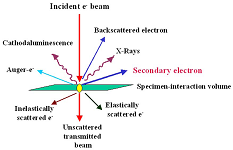
Asia Pacific Academy of Science Pte. Ltd. (APACSCI) specializes in international journal publishing. APACSCI adopts the open access publishing model and provides an important communication bridge for academic groups whose interest fields include engineering, technology, medicine, computer, mathematics, agriculture and forestry, and environment.

Preparation of gold nanoparticles and their use in detecting mercury ions
Vol 3, Issue 1, 2022
Download PDF
Abstract
Gold nanoparticles (Au NPs) were prepared by reducing HAuCl4 with sodium citrate. The sensitivity and selectivity of the gold amalgam catalytic degradation system for rhodamine B (RhB) in mercury detection were assessed using fluorescence and ultraviolet-visible absorption spectroscopy. This experiment aims to stimulate students' interest in scientific research and foster their exploratory spirit. It also enhances their comprehensive experimental skills and initiative, deepens their understanding and application of nanoparticle preparation, characterization, catalytic reactions, and metal ion analysis methods, and cultivates their innovative thinking and scientific mindset.
Keywords
References
- Jhansi RK, Tahir A, Sadia AK, et al. Use of Gold Nanoparticles in a Simple Colorimetric and Ultrasensitive Dynamic Light Scattering Assay: Selective Detection of Arsenic in Groundwater. Angew. Chem. Int. Ed. 2009; 121(51): 9848-9851. doi: 10.1002/ange.200903958
- Yang X, Wang E. A Nanoparticle Autocatalytic Sensor for Ag+ and Cu2+ Ions in Aqueous Solution with High Sensitivity and Selectivity and Its Application in Test Paper. Analytical Chemistry. 2011; 83(12): 5005-5011. doi: 10.1021/ac2008465
- Ma LN, Liu DJ, Wang ZX. Synthesis and Applications of Gold Nanoparticle Probes(Chinese). Chinese Journal of Analytical Chemistry. 2010; 38: 1. doi: 10.1016/S1872-2040(09)60013-X
- Daniel MC, Astruc D. Gold Nanoparticles: Assembly, Supramolecular Chemistry, Quantum-Size-Related Properties, and Applications toward Biology, Catalysis, and Nanotechnology. Chemical Reviews. 2003; 104(1): 293-346. doi: 10.1021/cr030698
- Katz E, Willner I. Integrated Nanoparticle–Biomolecule Hybrid Systems: Synthesis, Properties, and Applications. Angewandte Chemie International Edition. 2004; 43(45): 6042-6108. doi: 10.1002/anie.200400651
- Benoit JM, Fitzgerald WF, Damman AWH. The Biogeochemistry of an Ombrotrophic Bog: Evaluation of Use as an Archive of Atmospheric Mercury Deposition. Environmental Research. 1998; 78(2): 118-133. doi: 10.1006/enrs.1998.3850
- Wu GW, He SB, Peng HP, et al. Citrate-Capped Platinum Nanoparticle as a Smart Probe for Ultrasensitive Mercury Sensing. Analytical Chemistry. 2014; 86(21): 10955-10960. doi: 10.1021/ac503544w
- Chen Z, Zhang C, Gao Q, et al. Colorimetric Signal Amplification Assay for Mercury Ions Based on the Catalysis of Gold Amalgam. Analytical Chemistry. 2015; 87(21): 10963-10968. doi: 10.1021/acs.analchem.5b02812
- Pearson RG. Absolute electronegativity and hardness: application to inorganic chemistry. Inorganic Chemistry. 1988; 27(4): 734-740. doi: 10.1021/ic00277a030
Supporting Agencies
Copyright (c) 2022 Baodui Wang, Tianrong Li, Jun Hai, Yongmin Liang, Zhengyin Yang

This work is licensed under a Creative Commons Attribution 4.0 International License.

This site is licensed under a Creative Commons Attribution 4.0 International License (CC BY 4.0).
1.jpg)
Prof. Sivanesan Subramanian
Anna University, India





.jpg)
